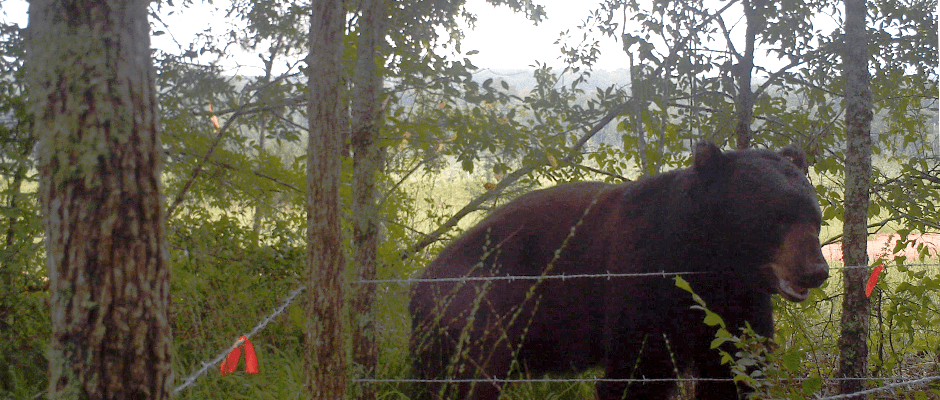Share this article
Student research project: Monitoring Georgia black bears
A small black bear population (Ursus americanus) in central Georgia appears to be relatively stable, and more bears are found in upland habitat filled with pines and other plants, according to recent research.
This research earned Annaliese Ashley honorable mention in the master’s category for student research in progress at last year’s TWS Annual Conference. Ashley recently received her master’s from the University of Georgia in Athens.
“There is a small, relatively isolated black bear population in the center of the state,” said Ashley, who took part in two years of a five-year study looking at the bears’ population size and density. The population has been of interest to the Georgia Department of Natural Resources for several years, she said.
As part of the study, Ashley used hair snares, which caught hairs left behind when bears rubbed up on barbed wire. The hairs were later used for genetic testing to determine how many individuals appeared at the hair snare stations. “You get a lot more data way, and it’s easier to catch hairs than to catch a whole bear,” Ashley said. She used her data and the data collected by a previous master’s student in 2012 and 2013 to determine bear population numbers and density.
Ashley found fewer than 500 bears in the population from 2012 to 2015 with no significant change in the population during those years. Both male and female bears were found in higher densities in upland areas where pines and heavy vegetation were in abundance, as opposed to lowland areas that included wetlands and swamp with less vegetation. “We assume bears don’t stay in the lowlands for as long just because there’s not as much for them to eat,” she said.
Ashley said she hopes this research informs management decisions about what kind of habitat the bears are using and which areas should be considered for harvest. The current harvest is one day of the year in December, when hunters can take one bear per person in a three-county private land hunt.
“I think this research is important, but the most important thing for this population is that it continues to be monitored,” Ashley said. Because these bears are so isolated, she said, information on genetic relatedness could be helpful in determining if the population is losing genetic diversity.
“This study is an integral piece of the puzzle, but I definitely don’t think it’s the last piece of the puzzle,” she said.
Header Image: A black bear rubs against a hair snare in Georgia. ©Annaliese Ashley








